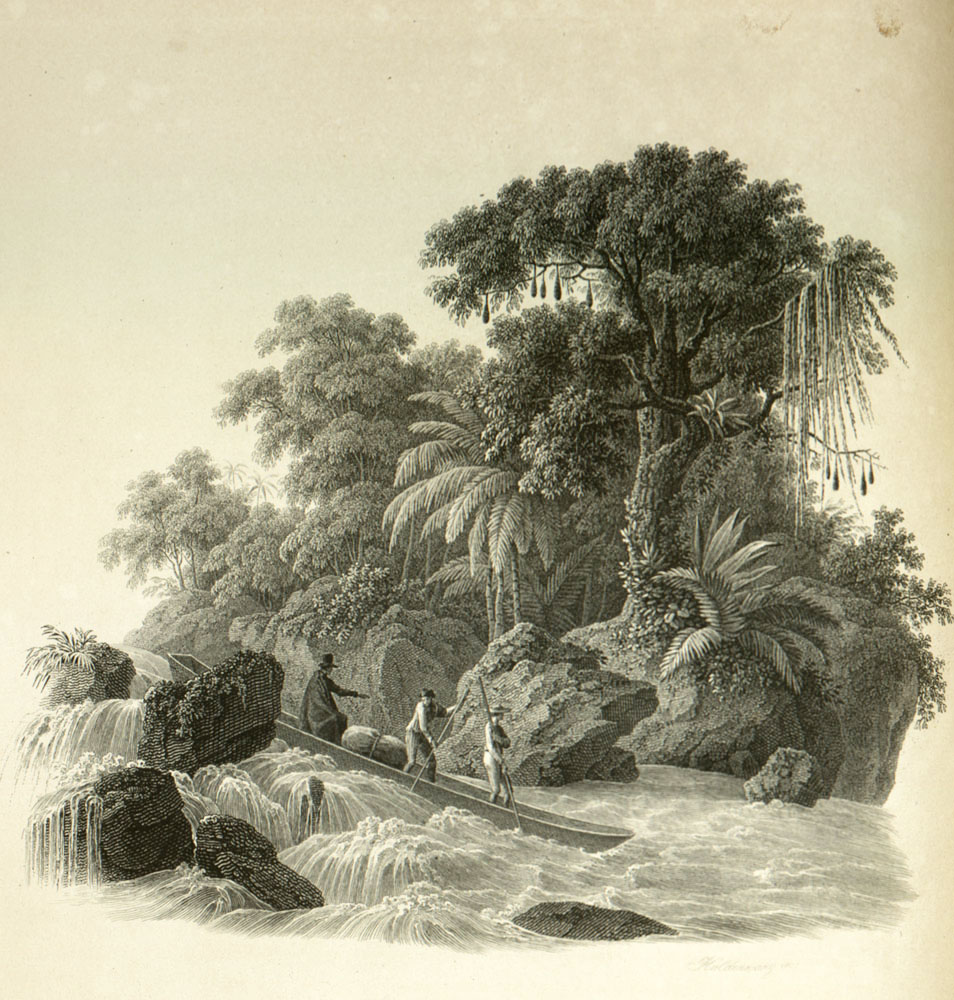
Opening Scientific Exploration
Although they did bring back zoological specimens, living and dead, to show off the wonders of the New World to their monarchs and backers, the earliest European explorers were more interested in riches (and survival) than in the exotic wildlife they encountered. Subsequent scientific interest was mostly limited to knowledge that could lead to profits, and to protect those profits the Spanish and Portuguese were intent on keeping secret all useful information about their colonies. Thus, Iberian explorers from the time of Francisco Hernández in the late sixteenth century, to Alejandro Malaspina in the late eighteenth century, were stymied in their attempts to publish the results of their investigations (Beddell 1983a), and non-Iberians were rarely allowed to travel in the Spanish or Portuguese possessions. There was, however, one great explorer that Spain (but not Portugal) allowed in on his own terms: Alexander von Humboldt (1769-1859).
Humboldt set out for the New World in 1799 and did not return to Europe until 1804. Although he traveled with the blessing of the Spanish crown, he was not naive. Beginning his trip in Venezuela, near where Columbus first set foot on the southern continent, he remarked that “if the Spanish visited these shores it was only to get, either by violence or exchange, slaves, pearls, grains of gold and dye-woods. The motives of this insatiable avarice seemed to be ennobled by a pretense for an enthusiastic zeal for religion . . .” (Humboldt 1818, vol. 3, 2). By contrast, Humboldt’s interests were entirely scientific and ranged broadly, with a particular focus on geography, geology, and botany. His interest in ornithology was only incidental, but he provided the first description of one of South America’s more remarkable birds, the nocturnal, cave-dwelling oilbird (Steatornis caripensis), the only Neotropical bird capable of echolocation.
Humboldt’s influence on ornithology, however, reached far beyond his personal interest. As the accounts of his travels were published, beginning in 1805, they helped create an urge to explore the New World tropics that was often irresistible. He was particularly inspiring to German naturalists, who found themselves suddenly welcome in the Portuguese areas of Latin America after the Portuguese court was forced to relocate to Brazil (1808-21) and the Portuguese crown prince, Pedro, married Caroline, the Austrian archduchess. Humboldt supported Johann Spix in his efforts to investigate Brazil’s birds, as well as Maximilian Wied-Neuwied, who described many birds new to science from his Brazilian explorations and acknowledged the influence of Humboldt. Hermann Burmeister likewise went to Brazil because of Humboldt’s encouragement. The Schomburgk brothers ventured to the Guianas to explore the regions of the Orinoco basin that Humboldt had missed, resulting in the first significant description of the birds of that region. (Humboldt wrote a foreword for Robert Schomburgk’s account.) His influence went beyond Germany: Alfred Russel Wallace and Charles Darwin read the English translation of Humboldt, and it stirred in both of them an urge to see the tropics. For Darwin, Humboldt’s work “was immensely evocative, not merely in his fine descriptions of the jungle and the views from the Andes but also for the grand theories of nature he proposed, each one documented with cultural and historical cross-references and a full armory of measurements that inspired readers to ponder some of the most important philosophical, artistic and scientific questions of the age” (Browne 1995, vol. 1, 133).
In 1822 Brazil declared itself independent of Portugal. Revolts against Spanish rule were occurring all over Latin America. The gates to scientific exploration were opening, and Humboldt had shown the way through.
